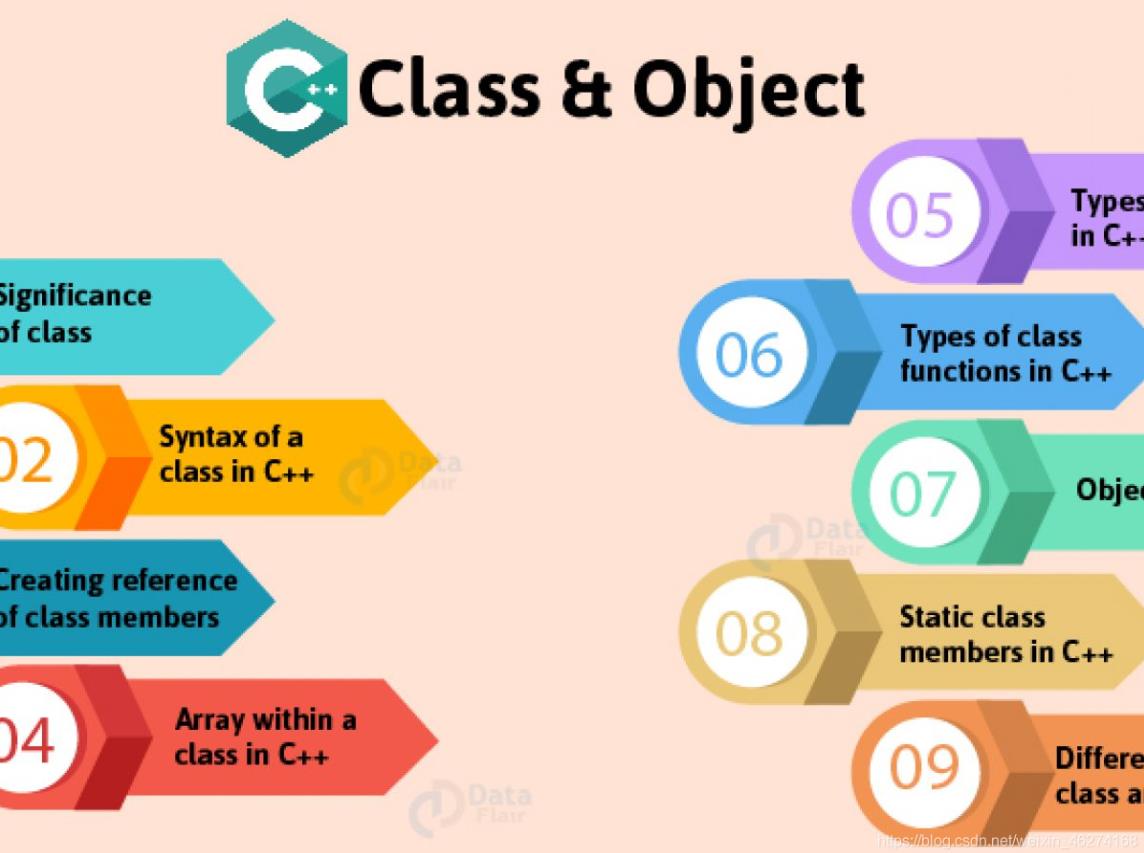C++对象&类 C++中对象&类的深入理解
我是小白呀 人气:0什么是对象
任何事物都是一个对象, 也就是传说中的万物皆为对象.
对象的组成:
- 数据: 描述对象的属性
- 函数: 描述对象的行为, 根据外界的信息进行相应操作的代码
- 具有相同的属性和行为的对象抽象为类 (class)
- 类是对象的抽象
- 对象则是类的特例
面向过程 vs 面向对象
面向过程
面向过程的设计:
- 围绕功能, 用一个函数实现一个功能
- 程序 = 算法 +数据结构
- 算法和数据结构两者互相独立, 分开设计
面向对象
面向对象的设计:
- 把算法和数据封装在一个对象中
- 设计所需要的歌者类和对象
- 向有关对象发送消息
- 对象 = 算法 + 数据结构
- 程序 = 对象*n + 消息
什么是类
在 C++ 中, 用类来描述对象. 类属于用户自定的数据类型, 并且该类型的数据具有一定的行为能力, 也就是类中所描述的方法. 通常来说一个类的定义包含两部分的内容, 一是该类的属性, 二是该类的所拥有的方法.

类的格式
格式:
class 类名
{
public:
//公共的行为或属性
private:
//私有的行为或属性
};
例子:
main.cpp:
#include "Student.h"
using namespace std;
int main() {
Student student1(1, "Little white", 'f');
student1.display();
return 0;
}
Student.cpp:
#include "Student.h"
#include <iostream>
using namespace std;
Student::Student(int n, string p, char g) {
num = n;
name = p;
gender = g;
}
void Student::display() {
cout << "num: " << num << endl;
cout << "name: " << name << endl;
cout << "gender: " << gender << endl;
}
Student.h:
#ifndef PROJECT1_STUDENT_H
#define PROJECT1_STUDENT_H
#include <string>
using namespace std;
class Student {
private: // 私有成员
int num; // 学号
string name; // 名字
char gender; // 性别
public:
Student(int num, string name, char gender);
void display();
};
#endif //PROJECT1_STUDENT_H
输出结果:
num: 1
name: Little white
gender: f
类的成员函数
类的成员函数是一个类的成员, 在类体重声明.
注: 如果一个类中不包含成员函数, 就等同于 C 语言中的结构体了, 体现不出类在面向对象程序设计中的作用.
函数访问权限
一般的做法: 讲需要被外界调用的成员函数指定为 public, 它们是类的对外接口. (有的函数只被本类中的成员函数调用, 以支持其他的函数操作, 应该将它们制定为 private)
私有的成员函数只能被本类中的其他成员函数所调用, 而不能被类外调用. 成员函数可以访问本类中任何成员 (包括私有和公用的), 可以引用在本作用域中有效的数据.
调用成员函数的权限:
- private: 私有的
- public: 公有的
- protected: 受保护的
访问对象中成员的 3 种方法:
- 通过对象名和成员运算符访问对象中的成员
- 通过指向对象的指针访问对象中的成员
- 通过对象的引用变量访问对象中的成员
方法一
通过对象名和成员运算符访问对象中的成员.
Time 类:
#ifndef PROJECT1_TIME_H
#define PROJECT1_TIME_H
class Time {
private:
int hour;
int minute;
int second;
public:
void set_time(int h, int m, int s);
void show_time();
};
#endif //PROJECT1_TIME_H
main:
int main() {
Time time;
time.set_time(6, 6, 6);
time.show_time();
return 0;
}
输出结果:
6:6:6
方法二
通过指向对象的指针访问对象中的成员.
Time 类:
#ifndef PROJECT1_TIME_H
#define PROJECT1_TIME_H
class Time {
private:
int hour;
int minute;
int second;
public:
void set_time(int h, int m, int s);
void show_time();
};
#endif //PROJECT1_TIME_H
mian:
int main() {
Time time; // 实例化time
time.set_time(6, 6, 6); // 设置时间
Time *p = &time; // 定义指针, 指向time地址
p->show_time();
(*p).show_time();
return 0;
}
输出结果:
6:6:6
6:6:6
方法三
通过对象的引用变量访问对象中的成员.
引用变量共占同一段存储单元. 实际上它们是同一个对象, 只是不同的面子表示而已.
Time 类:
#ifndef PROJECT1_TIME_H
#define PROJECT1_TIME_H
class Time {
private:
int hour;
int minute;
int second;
public:
void set_time(int h, int m, int s);
void show_time();
};
#endif //PROJECT1_TIME_H
mian:
int main() {
Time time1; // 实例化time
time1.set_time(6, 6, 6); // 设置时间
Time &time2 = time1;
time2.show_time();
return 0;
}
输出结果:
6:6:6
inline 成员函数
使用内置函数只是影响编译过程. 使用内置函数可以节省运行时间, 但却增加了目标程序的长度:
内置函数:
- 一般只将规模很小而使用频繁的函数声明为内置函数
- 内置函数中不能包括复杂的控制语句, 如循环语句和 switch 语句
- 对函数做 inline 声明, 只是程序设计者对编译系统提出的一个建议, 而不是指令性的
例子:
# include <iostream>
using namespace std;
inline int max(int, int, int);
int main() {
int i = 10, j = 20, k = 40, m;
m = max(i, j, k);
cout << "max= " << m << endl;
return 0;
}
inline int max(int a, int b, int c){
a = b > a ? b : a;
a = c > a ? c : a;
return a;
}
总结
加载全部内容